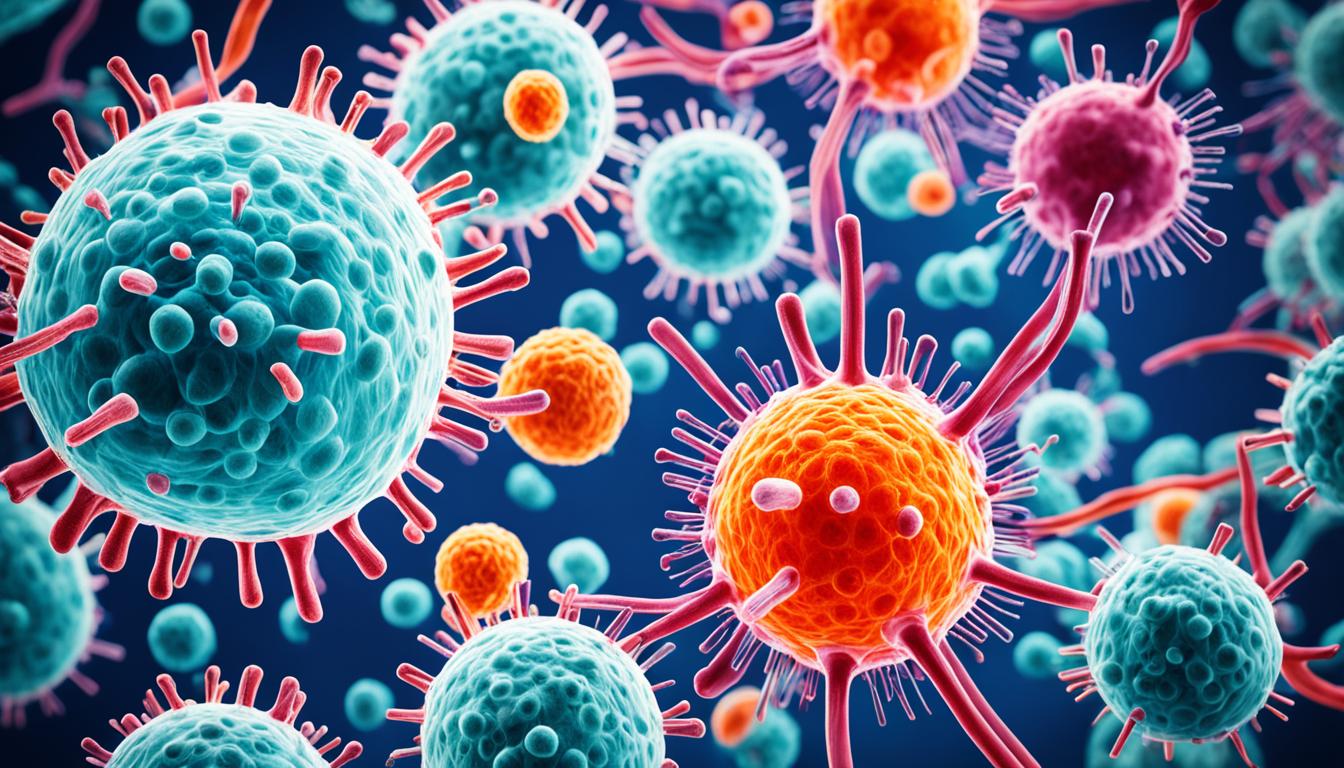Leukemia is a form of blood cancer affecting white blood cells and starting in the bone marrow. It’s a worldwide health challenge and has different types, like ALL, CLL, AML, and CML.
Recognizing symptoms early is vital. You might feel tired, have anemia, get sick often, bruise easily, feel bone pain, or see skin rashes. Other signs include headaches, vision issues, vomiting, and swelling in different areas.
The cause of leukemia is still unclear, but several risk factors are known. These include exposure to radiation, some chemicals, and certain viruses.
Diagnosis involves blood work, bone marrow tests, x-rays, and spinal taps. Once diagnosed, the treatment is planned according to the type and stage. Options might include chemo, radiation, transplants, or surgery.
Stem cell therapy is a novel way to treat leukemia. It swaps damaged cells with healthy ones, aiming for better patient outcomes.
The outlook for leukemia depends on factors like type, genetics, age, and health. Working closely with your healthcare team for a personalized plan and regular check-ups is key.
Thanks to ongoing research, there’s optimism for leukemia patients. With early detection and the right treatment, life quality and outcomes can improve greatly.
Key Takeaways:
- Leukemia is a type of blood cancer that affects the white blood cells and starts from the bone marrow.
- Common symptoms include tiredness, anemia, risk of infections, and easy bruising.
- Exposure to radiation, specific chemicals, and some viruses raises the risk of leukemia.
- Diagnosis includes blood tests and bone marrow checks to confirm the disease.
- Treatment varies by type and stage, possibly including stem cell therapy or chemo.
Leukemia Types and Classification
Leukemia is a complex disease. It varies in how fast it grows and in the blood cell type. Knowing about different leukemia types helps find the right treatment.
Acute Leukemia
Acute leukemia grows fast, needing quick action. It includes ALL and AML. ALL mainly targets lymphocytes, while AML affects cells turning into blood cells. Quick diagnosis and strong treatments are key.
Chronic Leukemia
Chronic leukemia is slow-growing. CLL and CML are its main types. CLL hits lymphocytes and is more common among older people. CML affects cells for blood development. Treatment focuses on watching and managing the disease.
Leukemia can be lymphocytic or myelogenous based on the blood cell type. This helps with treatment decisions.
Knowing the exact leukemia type is crucial for treatment planning. Science and medicine keep improving, offering better patient care and outcomes.
Current Advances in Leukemia Treatment and Prognosis
Leukemia treatment has moved ahead greatly in recent years. This has brought new hope for patients. A common treatment is chemotherapy, using drugs to combat cancer cells. Stem cell transplantation is another key method, offering a chance for long-term improvement. It replaces unhealthy cells with healthy ones. Radiation therapy aims at destroying cancer cells directly. Targeted and immunotherapies, pinpointing cancer cell vulnerabilities, are also on the rise.
The outlook for leukemia patients changes with type, stage, and other health factors. How the body responds to treatment also plays a big role. It is possible to reach remission or even be fully cured. Yet, outcomes can differ widely. Palliative care is vital, aiming to enhance daily life for patients throughout treatment.
When leukemia is diagnosed, a personalized plan should be crafted with doctors. Monitoring health closely helps spot relapses early. With ongoing research, the future looks brighter for leukemia treatment. New developments promise better outcomes for many leukemia patients.

